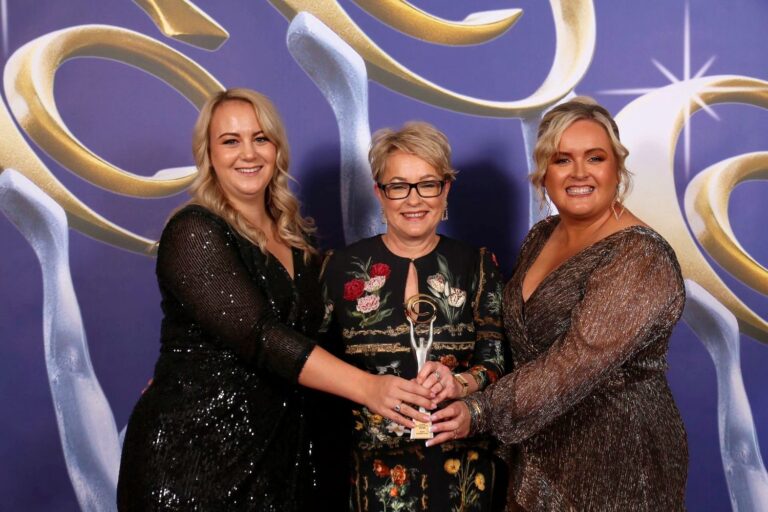When I ask business owners what good customer service means, they often say it’s providing what their customers want and expect.
In my opinion, this is merely basic or satisfactory customer service. Another way to think of this level of service is an exchange – the customer hands over money and gets a product or service in return.
If you call a taxi or Uber to drive you home from a night out, you expect the car to arrive within the timeframe given, the vehicle to be clean, the fare reasonable, and the driver polite.
This level of customer service is adequate, expected, unremarkable and uninspiring. Possibly enough to get the customer to return and buy from you again, but maybe not. Certainly not enough to get them talking about your business and recommending you to their friends.
Even if your business is highly transactional – such as a busy newsagency, supermarket or petrol station – there are ways to improve customer service so your customers wouldn’t think of going anywhere else (and if they do go somewhere else, they’re disappointed and come straight back!).
I’ll outline some ways in a moment. But first, let’s consider:
What is bad customer service?
Frustrations occur when expectations aren’t met. If your customer is dissatisfied with a product you’ve sold them, it’s because they were expecting something that wasn’t received. Perhaps an online purchase that arrived in the wrong size or a week late. Maybe a purchase that didn’t work as intended or was faulty. While disappointing and inconvenient, these issues can usually be rectified by a product exchange or refund.
But the way the customer is treated during this time is critical. If they are treated as an inconvenience or as if they are high-maintenance, they are unlikely to return. If the response they get is a heartfelt apology and a promise to make things right, all can be recovered.
If the expectation of a service isn’t met (and by service we mean something less tangible, like an entertainment experience, I.T. assistance or a holiday) the degree of dissatisfaction can be harder to measure, and the situation more challenging to rectify. Sometimes a refund is the answer, sometimes a repeat service with no charge.
Again, the way the interaction is handled is important. It is essential to be effective rather than right when dealing with a customer complaint. Even if you disagree with the customer, it’s often not worth arguing the point. If the outcome you want is for the customer to be happy and buy from you again (or even just to minimise the damage they could cause if they talk about their dissatisfaction) keep that in mind as you find a solution.
What is the impact of bad customer service?
The Harris Interactive, Customer Experience Impact Report reveals that 82% of consumers quit doing business with a company because of a bad customer experience.
The research revealed that in addition to easily accessible, accurate information to make well-informed buying decisions, what customers most wanted was to be respected, treated well, and have their issues resolved in a timely fashion.
In addition to fair exchange of money for your products and services, customers want to feel valued and appreciated, and important to your team and your business.
That means that of all the people who’ve used your business once and not returned, 82% likely did so because they didn’t feel important. Many business owners assume that when customers leave it’s because they are price-driven and go to a competitor to get a better deal, but this research indicates price is a far less a factor than how valued your customers feel.
Personal development master Tony Robbins outlines how human behaviour is motivated by the fulfilment of six core needs. One of these needs is for significance, or to feel important. Robbins believes that these needs are so essential to our wellbeing, that we will act to fulfil them in negative ways if positive ways don’t work.
If you take a look at online reviews or listen to word of mouth feedback about bad customer experiences, the vast majority of passionate complaints are about the customer not receiving enough attention, or not being respected. Cue the social media rants about sales assistants too busy talking to each other to serve customers in a store; Facebook reviews about waiting 15 minutes for a menu in a restaurant; or low TripAdvisor ratings citing rude customer service staff.
How can you rectify bad customer service?
Despite the fact that 82% of people stop doing business with a company because of bad customer service, 92% of consumers said they would be willing to go back to a company after a negative experience if they:
- Received a follow-up apology/correction from a supervisor/head office;
- Were offered a discount; or
- Were offered proof of enhanced customer service.
As further proof of how important great customer service is, the Customer Experience Impact Report reveals that 85% of consumers said they would be willing to pay more over the standard price in order to ensure a superior customer experience. Of these, 55% would pay 10 percent or more.
How can you provide exceptional customer service?
Customers have multiple interactions with you and your team, each of which provide an opportunity to go above and beyond. These touchpoints include their initial phone or web inquiry; a greeting on arrival at your premises; if and how they are assisted while looking at options; the actual purchase; and any follow-up contact after the sale.
The way you make your customers or clients feel important depends on your type of business, number of clients, and budget. Engage your team in a brainstorming session to find ways to make your customers feel valued. You may commit to:
- Remember customer names and build a relationship with them;
- Call your customer after their purchase to see how things are going;
- Send special occasion or birthday cards/gifts;
- Introduce a loyalty program;
- Socialise with your clients;
- Give first time customers an incentive for a repeat purchase; and/or
- Train all team members how to deal effectively with customer complaints.
Some examples of great customer service I’ve seen include:
- The local vet who calls pet owners the day after their pet is vaccinated, asking if their pet (by name) is doing well;
- The photographer who sends out a card to congratulate their wedding clients on each anniversary (with a free sitting offer for their anniversary or family portraits);
- The accounting firm that takes their top clients to dinner at the end of financial year;
- The bookstore staff who remember your child’s name and which book they bought last time they were in.
When your business becomes known for customer service excellence, word spreads. Your customers return, bring their friends, and tell others about it. And the research shows that 97% of survey respondents used word of mouth as their preferred method to share their experience.
And on a final note, just in case you need more convincing that customer service is important: 81% of companies with strong capabilities and competencies for delivering customer experience excellence are outperforming their competition (source: Peppers &Rogers Group, 2009 Customer Experience Maturity Monitor).






